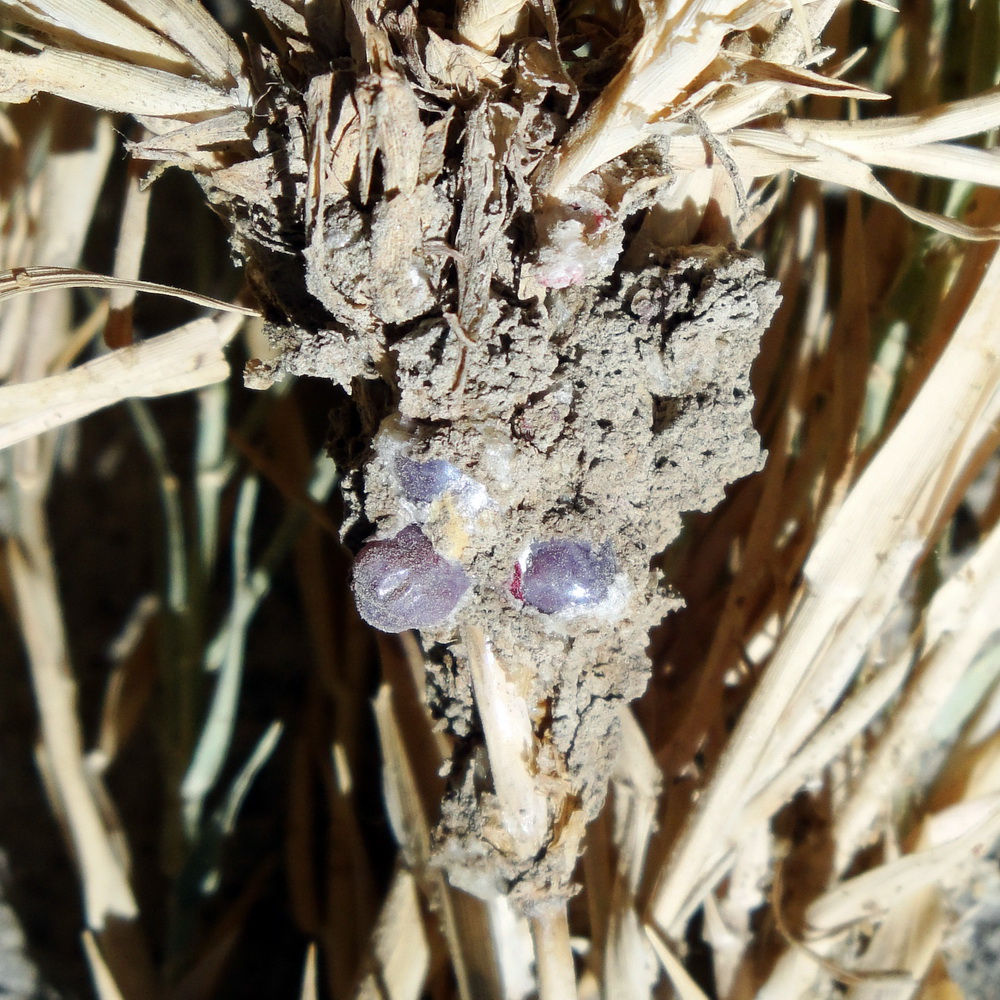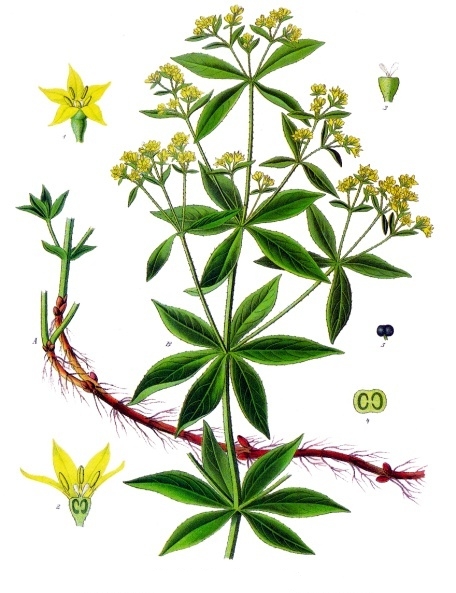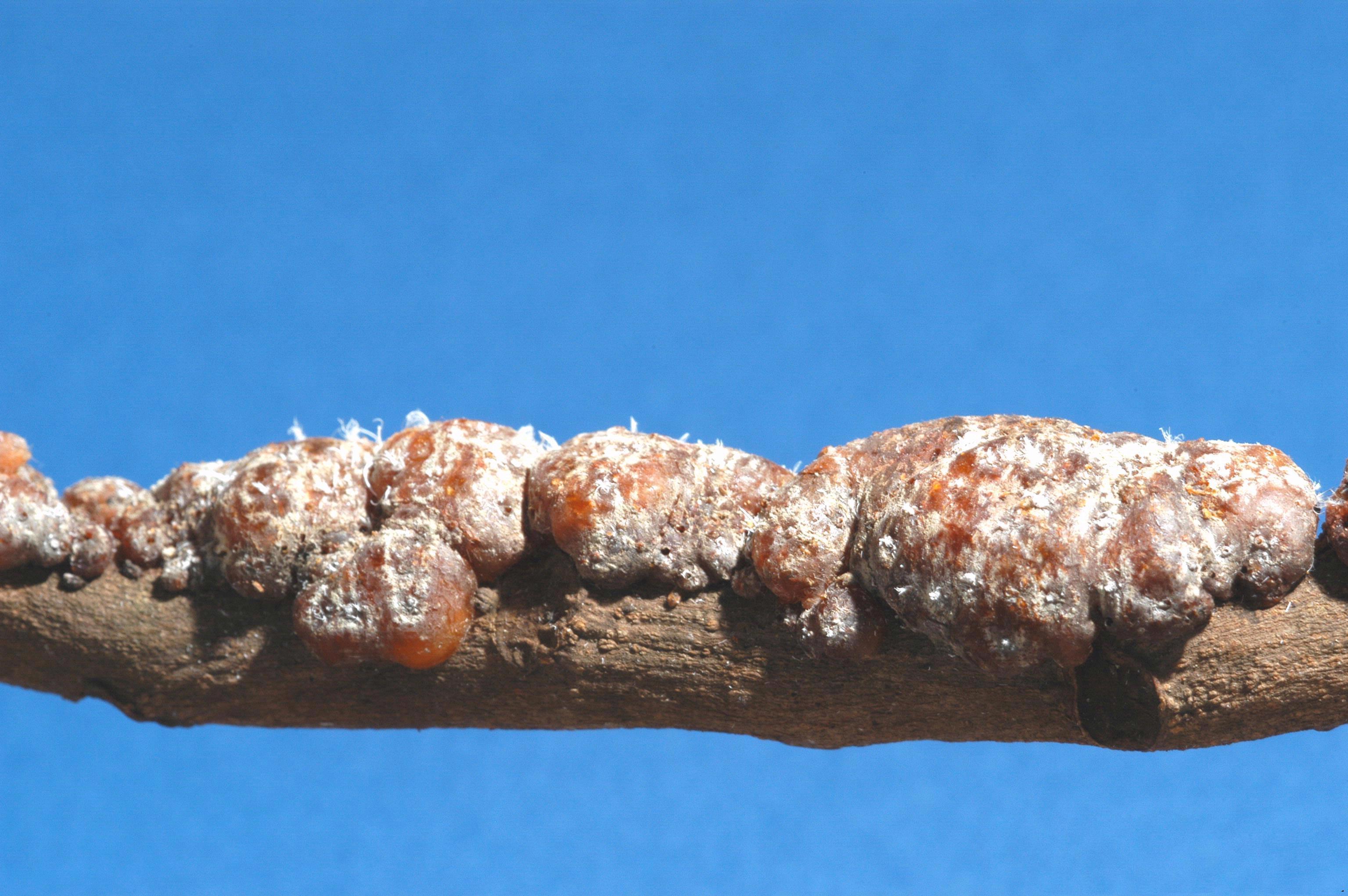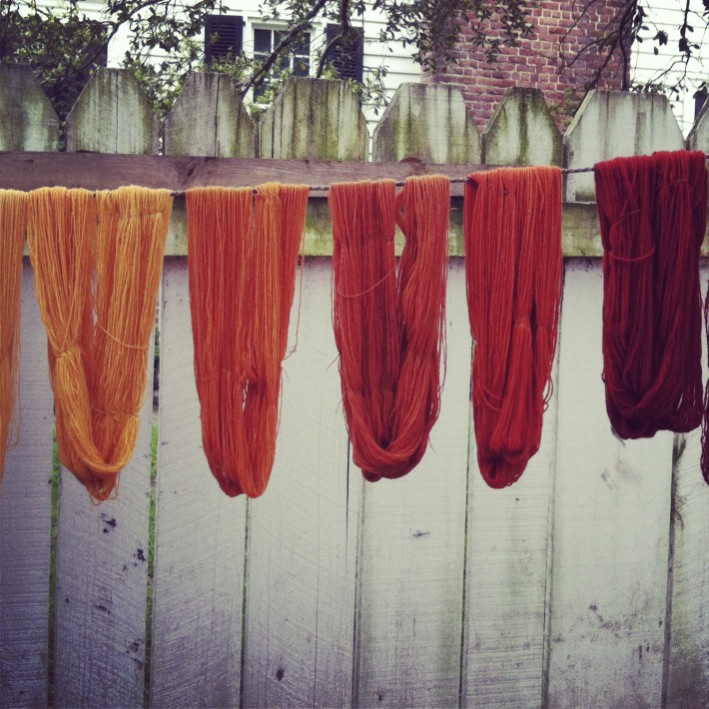|
Armenian Cochineal
The Armenian cochineal (''Porphyrophora hamelii''), also known as the Ararat cochineal or Ararat scale, is a scale insect indigenous to the Ararat plain and Aras (Araks) River valley in the Armenian Highlands and in Turkey. It was formerly used to produce an eponymous crimson carmine dyestuff known in Armenia as ''vordan karmir'' ( hy, որդան կարմիր, literally "worm's red") and historically in Persia as ''kirmiz''. Vedeler, citing Cardon (2007), notes that "the Persian name ''Kirmiz'' originally referred to the Armenian carmine, a parasitic insect living on Gramineae grass, but the same name was also used by Arab geographers for insects living on oak trees in Maghreb and Al-Andalus, probably referring to '' Kermes vermilio''", although " is ... not clear whether the 'Kirmiz' dyestuff mentioned in early Arab texts always refers to the use of the insect ''Kermes Vermilio''." English translation by Caroline Higgitt of Cardon's French-language book ''Le monde ... [...More Info...] [...Related Items...] OR: [Wikipedia] [Google] [Baidu] |
Johann Friedrich Von Brandt
Johann Friedrich von Brandt (25 May 1802 – 15 July 1879) was a German-Russian naturalist, who worked mostly in Russia. Brandt was born in Jüterbog and educated at a gymnasium in Wittenberg and the University of Berlin. In 1831 he emigrated to Russia, and soon was appointed director of the Zoological Museum of the St Petersburg Academy of Sciences. Brandt encouraged the collection of native animals, many of which were not represented in the museum. Many specimens began to arrive from the expeditions of Severtzov, Przhevalsky, Middendorff, Schrenck and Gustav Radde. He described several birds collected by Russian explorers off the Pacific Coast of North America, including Brandt's cormorant, red-legged kittiwake and spectacled eider. As a paleontologist, Brandt ranks among the best. He was also an entomologist, specialising in Coleoptera (beetles) and Diplopoda (millipedes). He died in Merreküll, Governorate of Estonia. He is also commemorated in Brandt's bat, Brandt's ... [...More Info...] [...Related Items...] OR: [Wikipedia] [Google] [Baidu] |
Kermes Vermilio
''Kermes vermilio'' is a species of '' Kermes'' so which feeds on trees. Some of the species are used by humans to make vermilion; though an at-similar-time-of-discovery mineral form in many cultures is cinnabar (HgS, Mercury Sulphide, crystallized). For details of further chemical alternatives see vermilion. Sister species The word (and dye) crimson is a corruption-derivative of kermes – the organism's genus, chiefly referring to its other species. See also *Cochineal *Armenian cochineal (''kirmiz'') *Vermilion Vermilion (sometimes vermillion) is a color, color family, and pigment most often made, since antiquity until the 19th century, from the powdered mineral cinnabar (a form of mercury sulfide, which is toxic) and its corresponding color. It i ... References Insects described in 1864 Animal dyes Kermesidae {{Coccoidea-stub ... [...More Info...] [...Related Items...] OR: [Wikipedia] [Google] [Baidu] |
Sargon II
Sargon II (Neo-Assyrian cuneiform: , meaning "the faithful king" or "the legitimate king") was the king of the Neo-Assyrian Empire from 722 BC to his death in battle in 705. Probably the son of Tiglath-Pileser III (745–727), Sargon is generally believed to have become king after overthrowing Shalmaneser V (727–722), probably his brother. He is typically considered the founder of a new dynastic line, the Sargonid dynasty. Modelling his reign on the legends of the ancient rulers Sargon of Akkad, from whom Sargon II likely took his regnal name, and Gilgamesh, Sargon aspired to conquer the known world, initiate a golden age and a new world order, and be remembered and revered by future generations. Over the course of his seventeen-year reign, Sargon substantially expanded Assyrian territory and enacted important political and military reforms. An accomplished warrior-king and military strategist, Sargon personally led his troops into battle. By the end of his reign, all o ... [...More Info...] [...Related Items...] OR: [Wikipedia] [Google] [Baidu] |
Neo-Assyrian Empire
The Neo-Assyrian Empire was the fourth and penultimate stage of ancient Assyrian history and the final and greatest phase of Assyria as an independent state. Beginning with the accession of Adad-nirari II in 911 BC, the Neo-Assyrian Empire grew to dominate the ancient Near East throughout much of the 8th and 7th centuries BC, becoming the largest empire in history up to that point. Because of its geopolitical dominance and ideology based in world domination, the Neo-Assyrian Empire is by many researchers regarded to have been the first world empire in history. At its height, the empire was the strongest military power in the world and ruled over all of Mesopotamia, the Levant and Egypt, as well as portions of Anatolia, Arabia and modern-day Iran and Armenia. The early Neo-Assyrian kings were chiefly concerned with restoring Assyrian control over much of northern Mesopotamia and Syria, since significant portions of the preceding Middle Assyrian Empire had been lost during a lon ... [...More Info...] [...Related Items...] OR: [Wikipedia] [Google] [Baidu] |
Textile Society Of America
The Textile Society of America (TSA) was founded in 1987 as an international non-profit educational organization for sharing and disseminating information about textiles and fiber media. The society sponsors a bi-annual conference where juried papers are presented on artistic, cultural, economic, historic, social and technical perspectives on textiles from around the world. History Textile Society of America is a membership organization, governed by a volunteer board of directors from museums and universities in North America and administered by a small staff. Its approximately 700 members include curators, educators, historians, independent scholars, artists, journalists, students, dealers and collectors. Membership includes access to symposium proceedings along with a newsletter, membership directory and textile bibliography Bibliography (from and ), as a discipline, is traditionally the academic study of books as physical, cultural objects; in this sense, it is also know ... [...More Info...] [...Related Items...] OR: [Wikipedia] [Google] [Baidu] |
Rubia Tinctorum
''Rubia tinctorum'', the rose madder or common madder or dyer's madder, is a herbaceous perennial plant species belonging to the bedstraw and coffee family Rubiaceae. Description The common madder can grow up to 1.5 m in height. The evergreen leaves are approximately 5–10 cm long and 2–3 cm broad, produced in whorls of 4–7 starlike around the central stem. It climbs with tiny hooks at the leaves and stems. The flowers are small (3–5 mm across), with five pale yellow petals, in dense racemes, and appear from June to August, followed by small (4–6 mm diameter) red to black berries. The roots can be over a metre long, up to 12 mm thick and the source of red dyes known as rose madder and Turkey red. It prefers loamy soils (sand and clay soil) with a constant level of moisture. Madder is used as a food plant by the larvae of some Lepidoptera species including the hummingbird hawk moth. Uses It has been used since ancient times as a vegetab ... [...More Info...] [...Related Items...] OR: [Wikipedia] [Google] [Baidu] |
Polish Cochineal
Polish cochineal (''Porphyrophora polonica''), also known as Polish carmine scales, is a scale insect formerly used to produce a crimson dye of the same name, colloquially known as "Saint John's blood". The larvae of ''P. polonica'' are sessile parasites living on the roots of various herbs—especially those of the perennial knawel—growing on the sandy soils of Central Europe and other parts of Eurasia. Before the development of aniline, alizarin, and other synthetic dyes, the insect was of great economic importance, although its use was in decline after the introduction of Mexican cochineal to Europe in the 16th century. Biology Life cycle In mid-July, the female Polish cochineal lays approximately 600-700 eggs, encased with a white waxy ootheca, in the ground. When the larvae hatch in late August or early September, they do not leave the egg case but remain inside until the end of winter. In late March or early April, the larvae emerge from the ground to feed f ... [...More Info...] [...Related Items...] OR: [Wikipedia] [Google] [Baidu] |
Porphyrophora
The scale insect genus ''Porphyrophora'' is a large group in the family Margarodidae, which includes the insects Polish cochineal and Armenian cochineal formerly used in dye A dye is a colored substance that chemically bonds to the substrate to which it is being applied. This distinguishes dyes from pigments which do not chemically bind to the material they color. Dye is generally applied in an aqueous solution and ... production. References Margarodidae Sternorrhyncha genera {{Coccoidea-stub ... [...More Info...] [...Related Items...] OR: [Wikipedia] [Google] [Baidu] |
Kerria Lacca
''Kerria lacca'' is a species of insect in the family Kerriidae, the lac insects. These are in the superfamily Coccoidea, the scale insects. This species is perhaps the most commercially important lac insect, being a main source of lac, a resin which can be refined into shellac and other products.Raman, A. (2014)Discovery of ''Kerria lacca'' (Insecta: Hemiptera: Coccoidea), the lac insect, in India in the late 18th century.''Current Science'' 106(6), 886. This insect is native to Asia.Ahmad, A., et al. (2012)Mouthparts and stylet penetration of the lac insect ''Kerria lacca'' (Kerr) (Hemiptera: Tachardiidae).''Arthropod Structure & Development'' 41, 435-441. Biology ''Kerria lacca'' produces a dye and a wax as natural secretions. The life cycle of this scale insect proceeds with the first instar of the larval stages, which are known as "crawlers". Larvae in this stage crawl along the branches of their host plants and feed on the phloem. As they pierce the branches to reach the ... [...More Info...] [...Related Items...] OR: [Wikipedia] [Google] [Baidu] |
Kermes (dye)
Kermes is a red dye derived from the dried bodies of the females of a scale insect in the genus '' Kermes'', primarily '' Kermes vermilio''. The ''Kermes'' insects are native in the Mediterranean region and are parasites living on the sap of the host plant, the Kermes oak (''Quercus coccifera'') and the Palestine oak (''Quercus calliprinos''). Amar, ''et al''. (2005), p. 1081 These insects were used as a red dye since antiquity by the ancient Egyptians, Mesopotamians, Indians, Greeks, Romans, and Iranians. The kermes dye is a rich red, a crimson. It has good colour fastness in silk and wool. It was much esteemed in the medieval era for dyeing silk and wool, particularly scarlet cloth. Post-medievally it was replaced by other red dyes, starting with cochineal. Etymology Kermes ultimately derives from the Sanskrit word कृमिज or ''kṛmija'' meaning "worm-made". This was adopted into Persian and later Arabic as قرمز ''qermez''. The modern English word kermes was ... [...More Info...] [...Related Items...] OR: [Wikipedia] [Google] [Baidu] |
Natural Dye
Natural dyes are dyes or colorants derived from plants, invertebrates, or minerals. The majority of natural dyes are vegetable dyes from plant sources—roots, berries, bark, leaves, and wood—and other biological sources such as fungi. Archaeologists have found evidence of textile dyeing dating back to the Neolithic period. In China, dyeing with plants, barks and insects has been traced back more than 5,000 years.Goodwin (1982), p. 11. The essential process of dyeing changed little over time. Typically, the dye material is put in a pot of water and heated to extract the dye compounds into solution with the water. Then the textiles to be dyed are added to the pot, and held at heat until the desired color is achieved. Textile fibre may be dyed before spinning or weaving ("dyed in the wool"), after spinning ("yarn-dyed") or after weaving ("piece-dyed"). Many natural dyes require the use of substances called mordants to bind the dye to the textile fibres. Mordants (from the Latin ... [...More Info...] [...Related Items...] OR: [Wikipedia] [Google] [Baidu] |
Americas
The Americas, which are sometimes collectively called America, are a landmass comprising the totality of North and South America. The Americas make up most of the land in Earth's Western Hemisphere and comprise the New World. Along with their associated islands, the Americas cover 8% of Earth's total surface area and 28.4% of its land area. The topography is dominated by the American Cordillera, a long chain of mountains that runs the length of the west coast. The flatter eastern side of the Americas is dominated by large river basins, such as the Amazon, St. Lawrence River– Great Lakes basin, Mississippi, and La Plata. Since the Americas extend from north to south, the climate and ecology vary widely, from the arctic tundra of Northern Canada, Greenland, and Alaska, to the tropical rain forests in Central America and South America. Humans first settled the Americas from Asia between 42,000 and 17,000 years ago. A second migration of Na-Dene speakers followe ... [...More Info...] [...Related Items...] OR: [Wikipedia] [Google] [Baidu] |




